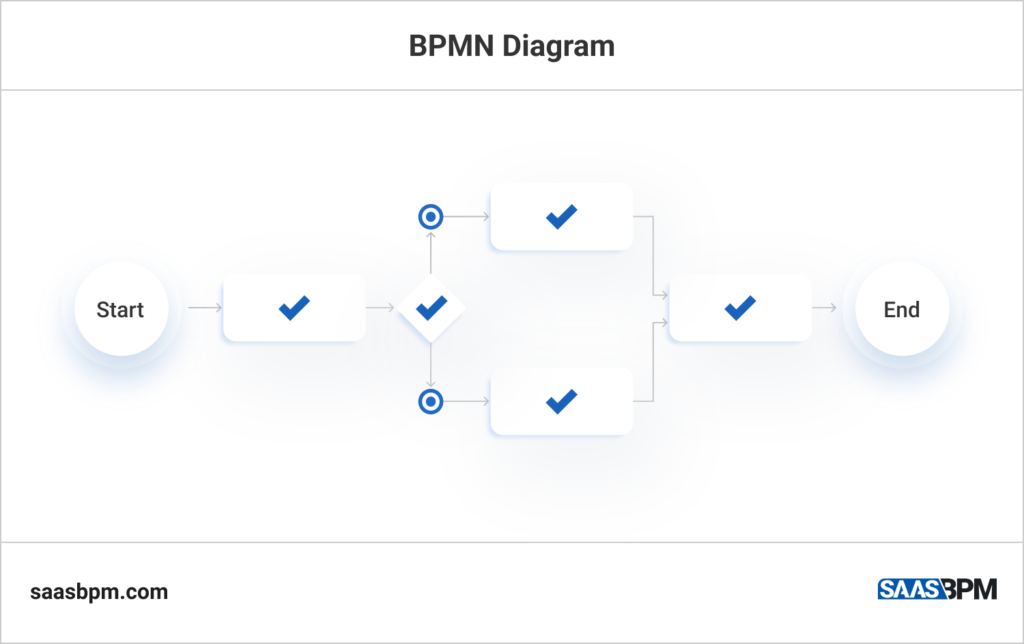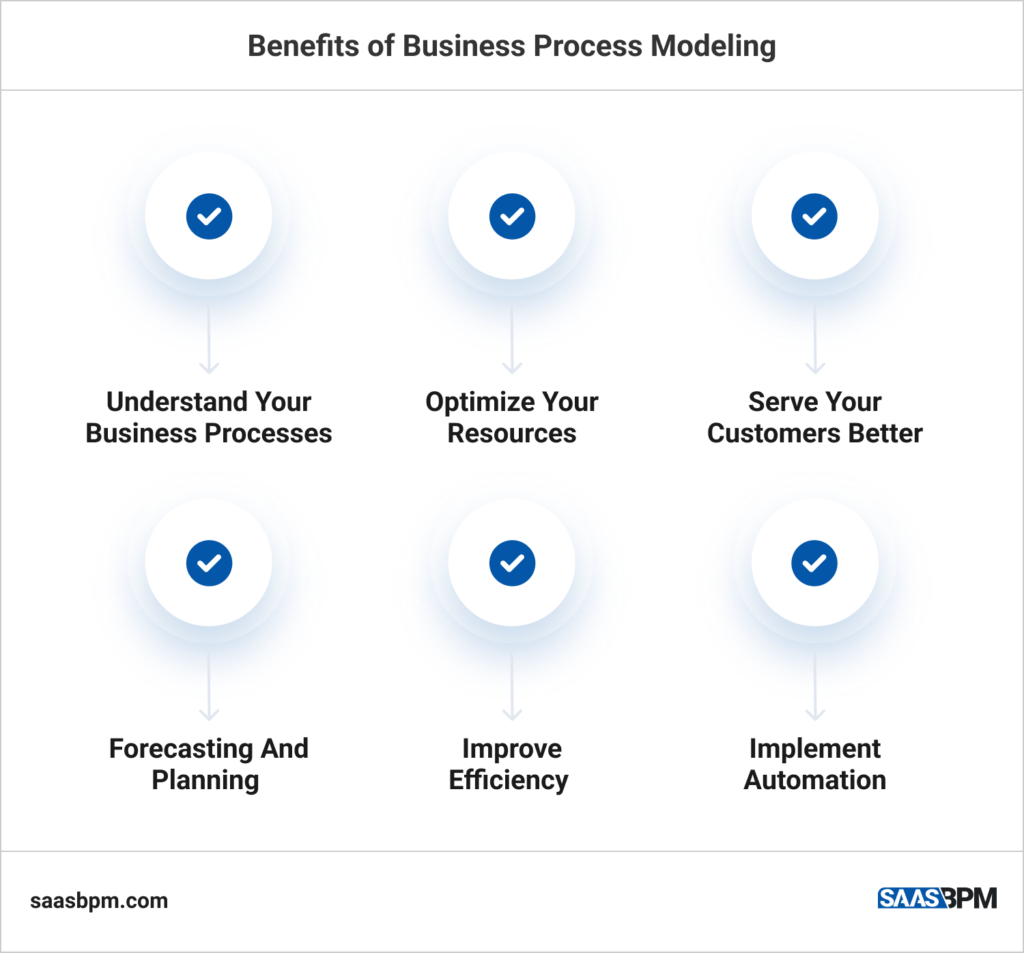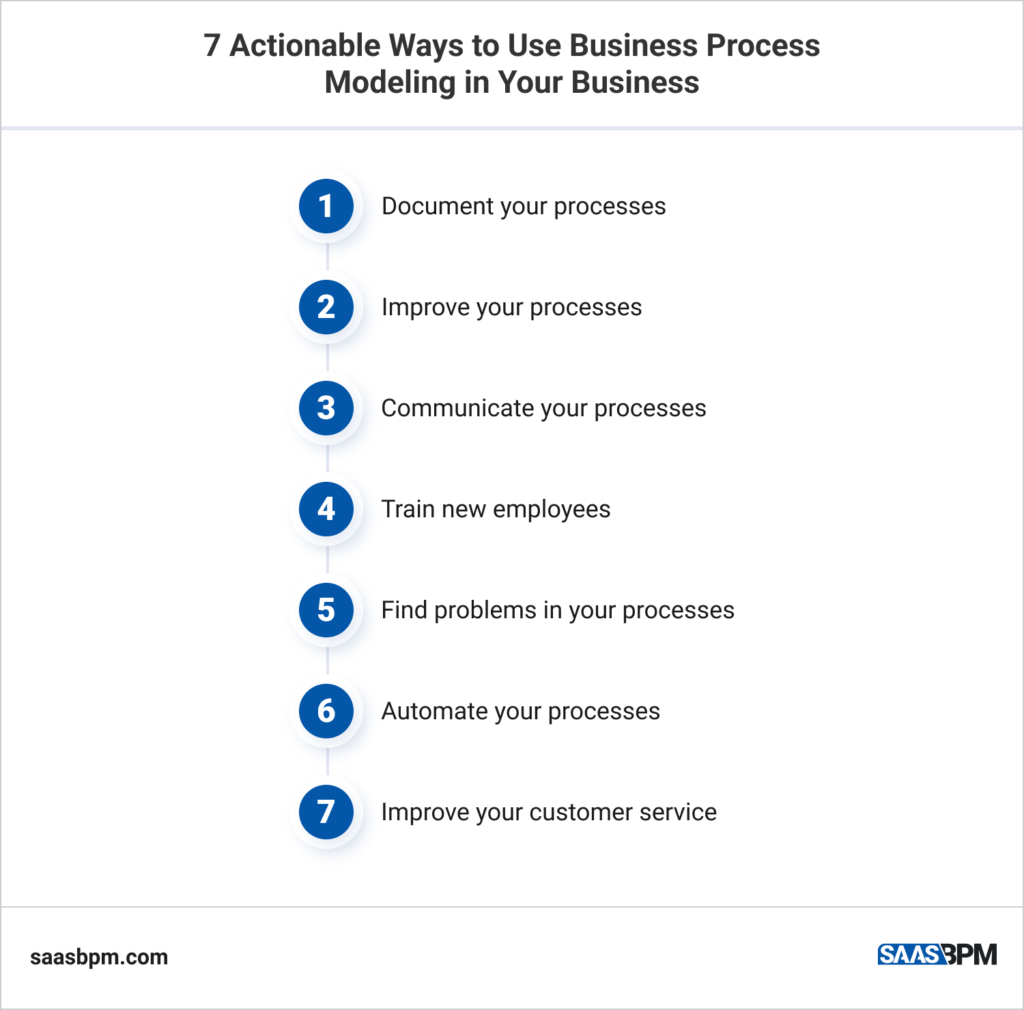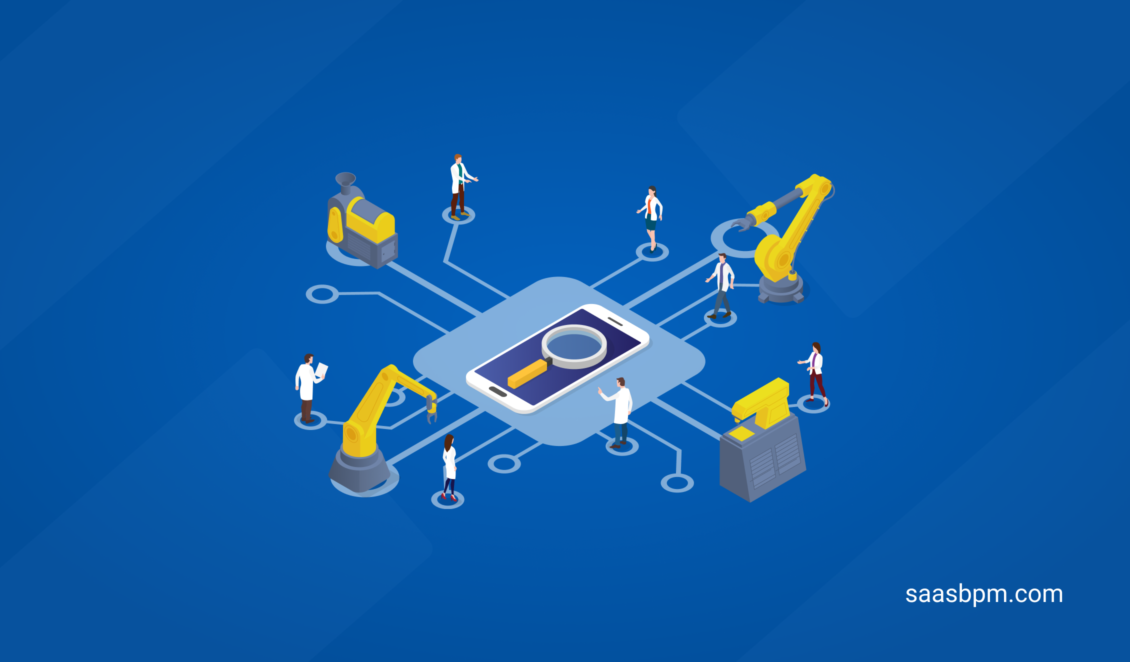Running a company and managing a team has never been easy, let alone if in a post-pandemic, fully remote and economically frustrated world. Thus, visualizing the workflows in your organization a.k.a. business process modeling has become essential for planning ahead and for smooth, powerful leadership.
Business process modeling is a great way to improve the efficiency of your organization. By documenting and diagramming your business processes, you can identify bottlenecks and areas where improvements can be made. Additionally, this can help you to optimize your resources and better serve your customers.
In this article, we will explore how business process modeling can be useful in your organization, and we will provide some tips for implementing it. Let’s get started!
What Is Business Process Modeling?

Business process modeling is the graphical representation of business processes. It is a tool that can be used to document, analyze, and improve business processes.
Business process models combine a variety of methods, including flowcharts, UML diagrams, BPMN diagrams, and swimlane diagrams.
Flowcharts are the most common type of business process model. They are easy to create and understand, and they can be used to document a variety of different types of business processes. UML diagrams are more complex than flowcharts, but they can model more complex processes. BPMN diagrams are the industry standard for business process modeling, and they are useful as they help document and improve business processes.

Swimlane diagrams are a type of business process model that uses swimlanes to visually organize information. Swimlanes represent different roles, departments, or stages in a process. You can use them in conjunction with other types of diagrams, such as BPMN diagrams.
Business Process Modeling vs. Process Mapping vs. Process Mining
What’s the difference between business process modeling, process mapping, and process mining? While they all deal with processes, there are some important distinctions. So which one should you use? It depends on what you need.
Business process modeling is a high-level approach that helps you understand your business as a whole. It is a tool that can be used to document, analyze, and improve business processes.
On the other hand, process mapping is more detailed and can help you document and analyze individual processes. It is the series of steps and strategies of creating a visual diagram of steps in the flow of activities for proper business process management. Process mapping focuses more on diagramming existing processes as a point of reference, whereas process modeling is part of process simulation and process optimization.
However, process mining goes one step further and uses data from IT systems to help you improve your processes.
Why Is Business Process Modeling Necessary?
There are many reasons why you might want to use business process modeling in your organization:

- Understand your business processes.
- Optimize your resources
- Serve your customers better
- Forecasting and planning
- Improve efficiency
- Implement automation
- Understand your business processes. By creating a model of your process including all individual tasks, you can see how it works and identify areas where improvements can be made.
- Optimize your resources. By understanding your process, you can see where you are using resources unnecessarily and make changes to improve efficiency.
- Serve your customers better. By understanding your process, you see where and how you could improve customer experience .
- Forecasting and planning. By understanding your process, you can anticipate changes and trends and make plans accordingly.
- Improve efficiency. by identifying and removing bottlenecks in your processes, you can make your organization more efficient.·
- Implement automation. by understanding your manual processes, you can identify opportunities for automation. These are usually repetitive day-to-day operations that don’t require that much expertise but are necessary to keep the business running smoothly.
7 Actionable Ways to Use Business Process Modeling in Your Business
Now that you know the benefits of business process modeling, let’s take a look at some specific ways you can use it in your business.

1. Document your processes
2. Improve your processes
3. Communicate your processes
4. Train new employees
5. Find problems in your processes
6. Automate your processes
7. Improve your customer service
1. Document your processes.
This is the most basic way to use business process modeling. By creating a model of your process, you will have a written record of what your process is and how it works. This can be useful for training new employees or for auditing purposes.
2. Improve your processes.
Once you have a model of your process, you can start looking for ways to improve it. This might involve simplifying steps, eliminating bottlenecks, or adding automation.
3. Communicate your processes.
Business process modeling can be a great way to communicate your processes to other people in your organization as well as to key stakeholders. By creating a model, you can make sure that everyone is on the same page and that there is a mutual understanding of how the process works.
4. Train new employees.
If you have new employees that you need to onboard, business process modeling can be a great way to train them on the different workflows quickly. By creating a model of the process, you can walk them through each step and make sure they understand what they need to do.
5. Find problems in your processes.
By creating a model of your process, you can identify areas where there might be problems. This could be anything from inefficiencies to errors. By finding these problems early, you can save yourself a lot of time and money in the long run.
6. Automate your processes.
Once you have a model of your process, you can start to look for opportunities to automate it. This might involve using software to automate repetitive tasks or using robotics to handle physical tasks.
7. Improve your customer service.
By understanding your process, you can identify areas where you can improve customer experience. This might involve making changes to your strategy or adding new steps to improve the customer experience.
What Are the Elements of Business Process Modeling?

To fully model a business process, there are a few key elements that you need to keep in mind and plan for:
Scope statement: the boundaries of the process and what it includes.
Process steps: the individual tasks that your team needs to complete in order to complete the process.
Goal: the end result that you are trying to achieve with the process.
Variations: any deviation from the standard process that might occur.
Roles and responsibilities: a list of who is responsible for each task in the process.
Inputs: the steps required in order to start the process.
Outputs: what has been produced as a result of the process.
Controls: these are the processes that need to be in place in order to make sure the organization is running smoothly.
In Conclusion
By understanding and utilizing business process modeling, you can expect improvements in efficiency and customer service throughout your organization. By taking the time to document, assess, and action steps to improve your processes, you can optimize resources, better serve customers, and lay a foundation for successful automation down the line.
Business process modeling may seem daunting at first, but breaking it down into its component parts makes it much more manageable. And the results are worth the effort!

